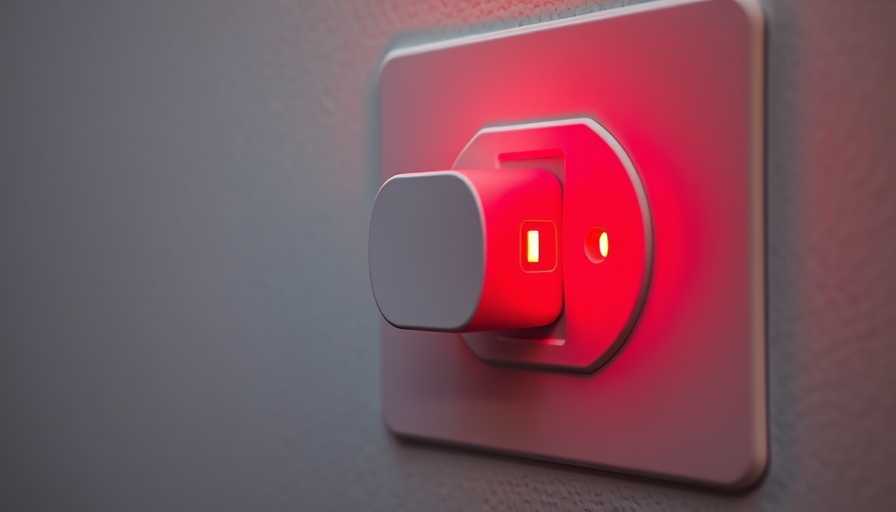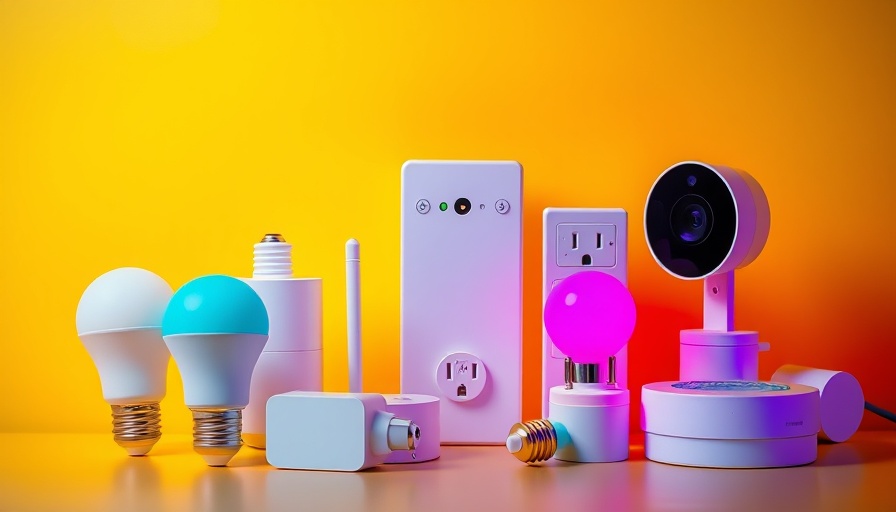
Understanding Smart Plug Functionality and Safety
As the spring season ushers in pleasant weather, it brings with it the uncertain oscillations of temperature that often necessitate different forms of heating. Smart plugs, while convenient, hold limitations when it comes to high-energy devices like heaters and blankets. It is essential for homeowners and businesses interested in solar energy and green solutions to understand how to safely integrate these devices into their electrical systems.
Fundamentals of Your Home’s Electrical System
Your home's electrical panel comprises breakers that handle specific electrical loads critical to the smooth operation of various appliances. The typical US home operates on a 120-volt system, with breakers rated primarily at 15 to 20 amps. Understanding this can help prevent overloading your circuits when using smart plugs. If your circuit becomes overloaded, the breaker will trip, interrupting power to connected devices to prevent potential hazards.
Safety Precautions for Using Smart Plugs
When integrating heaters into your home using smart plugs, it's crucial to pay attention to the maximum wattage and amperage ratings of both the appliance and the smart plug. For instance, household space heaters often operate at around 1,500 watts. To prevent circuit overloads, it is advised that devices should not exceed 80% of their rated capacity, which for a 15-amp smart plug translates to about 1,440 watts. This precaution maintains electrical safety and energy efficiency, essential for a home leveraging solar and renewable energy sources.
Monitoring and Managing Electrical Load
Using electrical monitoring devices, such as sensors available through partnerships with insurance companies, can provide real-time insights into potential electrical hazards. These tools can alert homeowners to anomalies that might indicate overloaded circuits. Knowledgeably managing the energy consumption of thermal appliances during fluctuating spring temperatures can mitigate risks and enhance energy efficiency.
Choosing the Right Smart Plug for Your Needs
Not all smart plugs are created equal. It is advisable to consider their amperage ratings before purchasing. While most are rated for 15 amps, some specialized models can handle more. If your setup includes devices that draw higher energy, such as multiple heaters or air conditioning units, look for smart plugs that can support higher ratings. Products like the Aeotec Heavy Duty Smart Switch, which boasts higher amperage support, should be prioritized for demanding applications.
The Future of Smart Plug Technology
As the move towards a smarter, greener home continues, the evolution of smart plug technology may introduce more robust options capable of handling significant electrical loads. Enhanced features, such as energy efficiency monitoring, remote control abilities, and even integration with solar power systems, could revolutionize how we utilize electricity. By leveraging these advancements, homeowners can maximize their energy savings while minimizing their carbon footprints.
Conclusion: Embracing Smart Technology with Caution
In conclusion, as spring introduces challenges to home energy management, understanding the dynamics of smart plugs can be the key to improved safety and efficiency. With thoughtful integration into existing electrical systems, smart plugs can contribute to a greener, more energy-efficient home. For those utilizing renewable energy, such as solar power, these devices can become essential tools in the transition to sustainable living. Engage with your electrical systems, educate yourself on your devices, and strive for energy efficiency this season.
 Add Row
Add Row  Add
Add 




Write A Comment